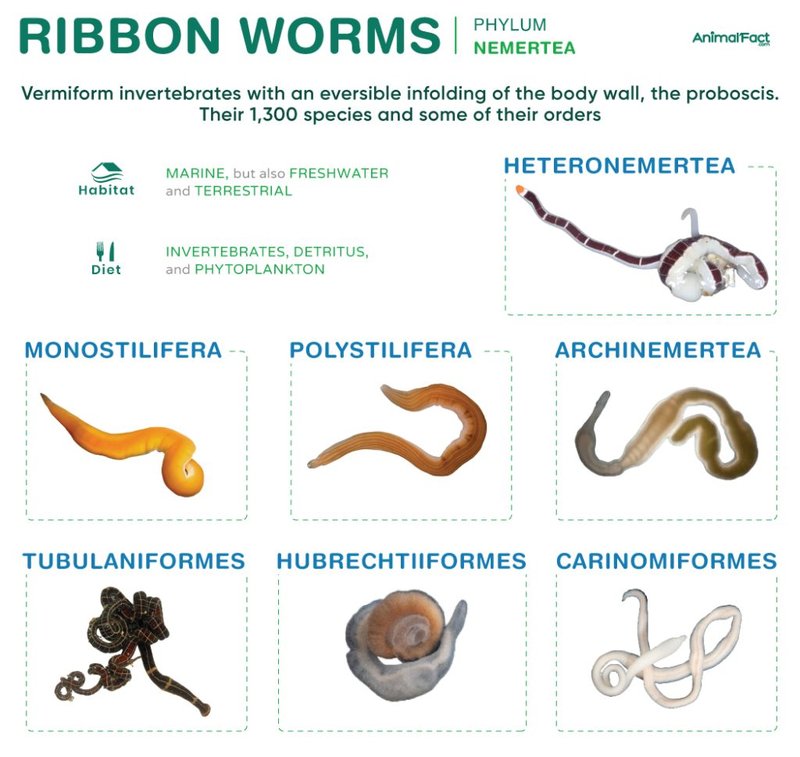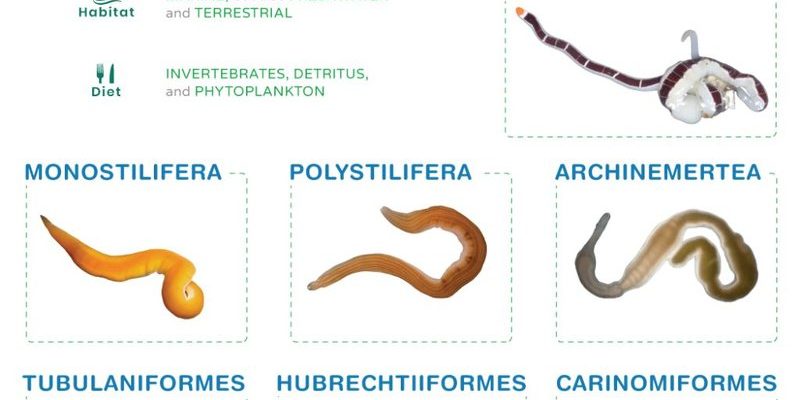
Picture a long, thin noodle that can retract and extend at will. That’s a ribbon worm for you! They can range from just a few centimeters to impressive lengths of over 30 meters. Imagine a giant earthworm that can swim and hunt, and you’ll get a sense of what these animals are capable of. So, what makes ribbon worms tick? Let’s dive in to discover more about these remarkable nemerteans.
What Are Ribbon Worms?
Ribbon worms belong to the phylum *Nemertea*, which is made up of more than 1,300 known species. These worms are often characterized by their long, slender bodies that can be brightly colored or even nearly transparent. While they primarily live in marine environments, some species have adapted to freshwater and even terrestrial ecosystems.
Their bodies are built like a soft rubber band, allowing them to move fluidly through various habitats. Ribbon worms possess a unique feature called the **proboscis**, which they use to catch prey. Think of it as a specialized feeding tool that can snap out to grab unsuspecting victims, like small fish or invertebrates. This means they’re not just simple scavengers; they’re quite effective predators in their watery realms.
Physical Characteristics of Ribbon Worms
You might have guessed from their name that ribbon worms have a ribbon-like appearance. Their bodies can vary in color and texture. Here’s what you can typically expect:
- Body Shape: Most nemerteans have long, flat, and smooth bodies, often resembling ribbons or strings.
- Size: While many species are just a few centimeters long, some can stretch beyond 30 meters, making them one of the longest animals on the planet.
- Coloration: They can be found in vibrant colors like red, green, and yellow, or be more subdued, matching their environments.
The fascinating thing about ribbon worms is their adaptability. Depending on their habitat, they can alter their appearance slightly—sort of like how a chameleon changes colors. This ability can help them blend in from predators and prey alike, making survival easier.
Habitat and Distribution
Ribbon worms can be found in a variety of environments. They thrive in:
- Marine Environments: Most species are marine, residing in shallow waters, tidal pools, or even deep-sea areas.
- Freshwater Bodies: A select few have made their home in lakes, rivers, and other freshwater habitats.
- Terrestrial Areas: Some species can be found in humid or wet areas on land, often hiding beneath leaf litter or soil.
This diverse habitat range reflects their adaptability. Whether they’re hidden among coral reefs or lurking in muddy riverbeds, ribbon worms have found a way to thrive almost everywhere.
Feeding and Hunting Techniques
Here’s the thing about ribbon worms: they’re not just passive eaters. They use a clever method to catch their food. The **proboscis** that I mentioned earlier is often armed with sharp barbed structures.
When hunting, a ribbon worm extends its proboscis swiftly toward its target. This may feel like a mesmerizing magic trick! Once the proboscis makes contact, it wraps around the prey, allowing the worm to reel it in for a meal. Their diet primarily consists of:
- Small fish
- Crustaceans
- Other small invertebrates
Their hunting technique highlights how ribbon worms are not only unique in appearance but also in their predatory skills.
Reproduction and Life Cycle
Ribbon worms can reproduce both sexually and asexually. Some species lay eggs, while others can regenerate their bodies from cut segments, a fascinating trait that speaks to their resilience. The young worms often resemble miniature adults and will continue to grow and develop in their respective habitats.
Their life cycle can vary significantly based on species and environmental factors. Some nemerteans have a planktonic larval stage, while others may mature more rapidly, allowing them to adapt to changing conditions in their ecosystems.
Importance in Ecosystems
You might be wondering why ribbon worms matter in their ecosystems. Well, they play a crucial role in the food web. As predators, they help control populations of smaller marine animals, and as prey, they provide nourishment for larger creatures. It’s a delicate balance!
Moreover, ribbon worms contribute to the health of their habitats. By feeding on detritus and other organic materials, they help in the recycling of nutrients, which keeps ecosystems thriving. So, the presence of ribbon worms indicates a healthy marine environment.
Ribbon worms, or nemerteans, are true wonders of the natural world. Their unique features, such as their elongated bodies and impressive hunting techniques, make them fascinating subjects of study and admiration. While they might not be as popular as other marine creatures, their significance in their ecosystems cannot be overlooked.
So, next time you’re near the ocean or even just reading about marine life, take a moment to ponder the ribbon worm. These creatures embody the complexity and beauty of life beneath the waves, reminding us of the intricacies of nature that often go unnoticed.

